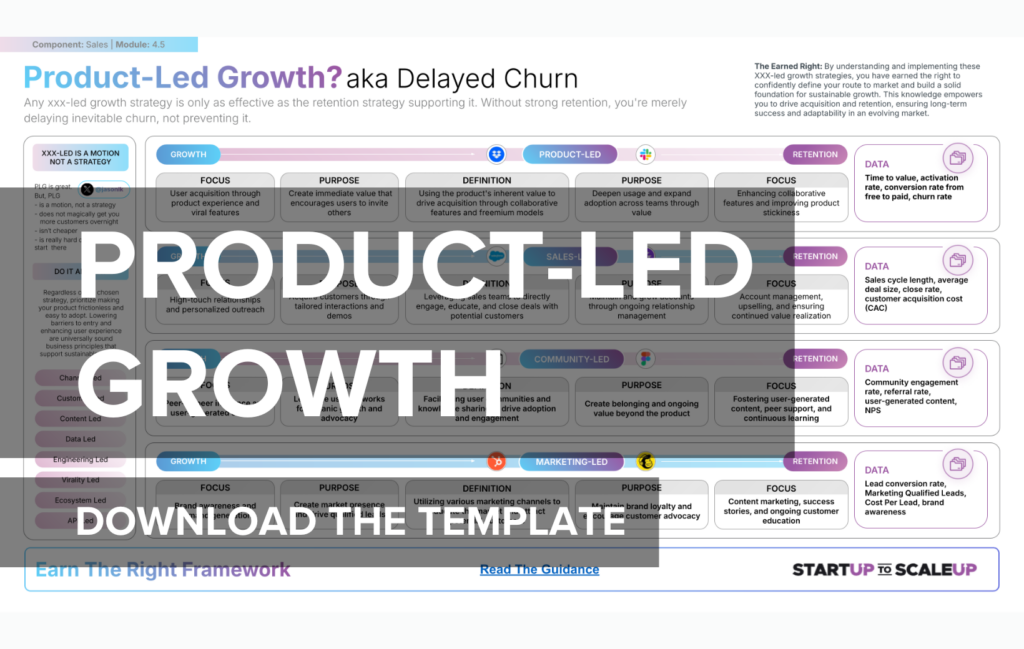How Can Startup Founders Leverage Product-Led Growth
What is product-led growth and why is it important for startups?
Product-led growth (PLG) is a strategy where user acquisition, expansion, and retention are primarily driven by the product itself, rather than traditional sales or marketing efforts. It’s important for startups because:
- Lower customer acquisition costs: Users often discover and adopt the product organically.
- Faster scaling: Viral loops can lead to rapid user growth.
- Better user experience: Focus on product drives continuous improvement.
- Data-driven decisions: User behavior directly informs product development.
- Efficient resource use: Less reliance on large sales teams early on.
PLG can be particularly effective for startups with limited resources, allowing them to grow rapidly and efficiently.
How does product-led growth differ from traditional sales-led approaches?
Product-led growth differs from traditional sales-led approaches in several key ways:
- User focus: PLG prioritizes the end-user experience over enterprise buyer needs.
- Acquisition funnel: Users typically try the product before talking to sales.
- Expansion strategy: Growth comes from user adoption and upgrades, not just new deals.
- Pricing model: Often involves freemium or trial-based models to lower barriers to entry.
- Team structure: Product and engineering play a larger role in growth strategies.
While sales-led approaches rely heavily on human touchpoints, PLG leverages the product itself as the primary driver of growth.
What are the key components of a successful product-led growth strategy?
A successful product-led growth strategy typically includes:
- Frictionless onboarding: Easy sign-up and immediate value delivery.
- Compelling free offering: A robust free tier or trial that showcases core value.
- Viral loops: Features that naturally encourage users to invite others.
- User-centric design: Intuitive interface that requires minimal training.
- Value metric pricing: Pricing tied to a metric that aligns with user-perceived value.
- Self-serve expansion: Easy upgrades or expansions without sales intervention.
- Product analytics: Deep insights into user behavior to drive improvements.
These elements work together to create a flywheel effect, where happy users drive more adoption and growth.
How can startups measure the success of their product-led growth efforts?
Key metrics for measuring product-led growth success include:
- Activation rate: Percentage of new users who complete key actions.
- Time to value: How quickly users experience the product’s core benefit.
- User retention: Often measured as daily/weekly/monthly active users.
- Expansion revenue: Growth from existing customers upgrading or increasing usage.
- Viral coefficient: Average number of new users each existing user brings in.
- Customer acquisition cost (CAC): Should be lower than in sales-led models.
- Net revenue retention: Measures growth from existing customers minus churn.
Focus on metrics that show not just growth, but also engagement and value realization.
What role does user experience play in product-led growth?
User experience is critical in product-led growth because:
- First impressions matter: A great UX can hook users from the start.
- Reduces friction: Intuitive design lowers barriers to adoption and expansion.
- Drives engagement: Enjoyable experiences encourage frequent and sustained use.
- Facilitates viral growth: Users are more likely to recommend products they enjoy using.
- Supports self-service: Good UX can reduce the need for customer support.
In PLG, the product itself must guide users to value, making user experience a key driver of success.
How can startups balance product-led and sales-led approaches?
Balancing product-led and sales-led approaches involves:
- Segmentation: Use PLG for smaller or self-serve customers, sales for enterprise.
- Hybrid model: Start with PLG, then layer in sales for high-value accounts.
- Product-assisted sales: Use product data to inform and enhance sales efforts.
- Education-first sales: Focus sales on teaching and consulting rather than pure selling.
- Tiered approach: Offer self-serve options for basic needs, sales support for complex ones.
The key is to let the product drive initial adoption and engagement, while using sales strategically to support expansion and enterprise needs.
Product-led growth can be a powerful strategy for startups, allowing for efficient scaling and deep user engagement. However, it requires a shift in mindset from traditional sales-led approaches. Focus on creating a product that delivers immediate value, reduces friction, and encourages organic growth. Remember, PLG isn’t just about acquiring users – it’s about turning those users into advocates who drive sustainable growth for your startup. As you implement PLG, continually gather and analyze user data to refine your product and strategy.
With the right approach, product-led growth can become a significant competitive advantage for your startup.
